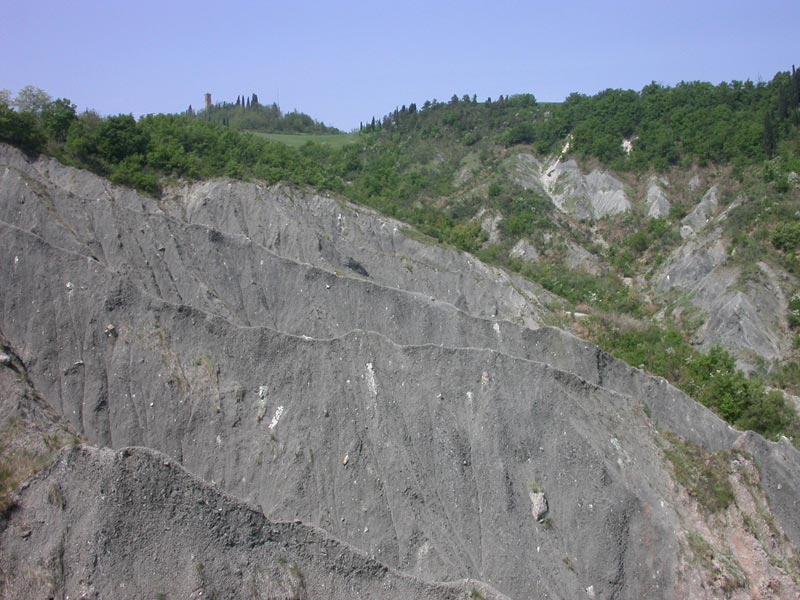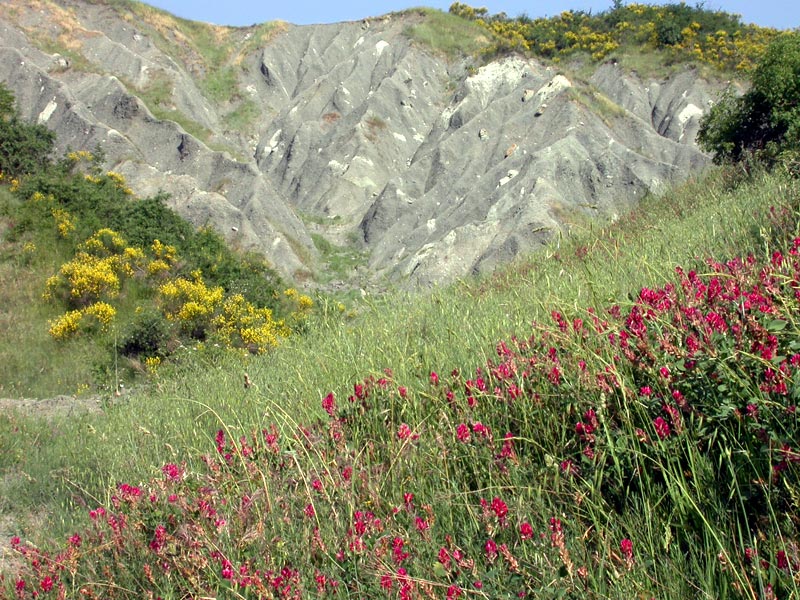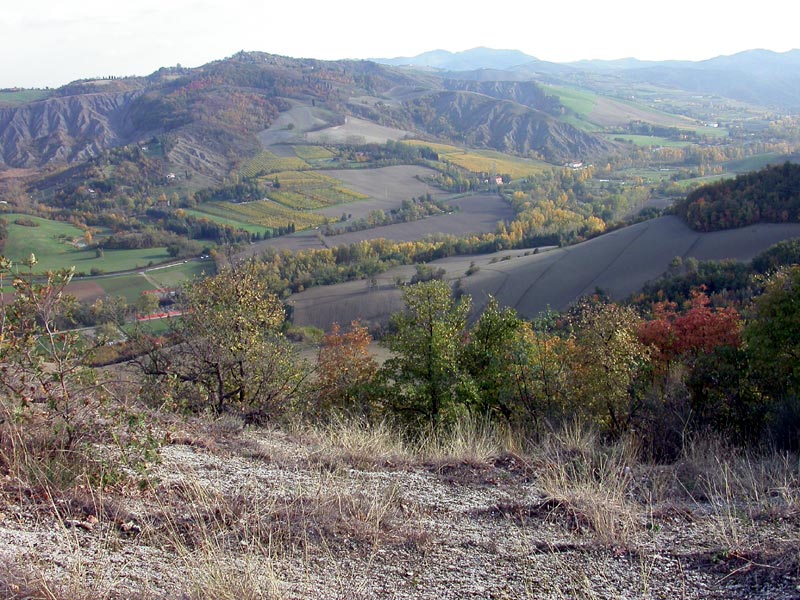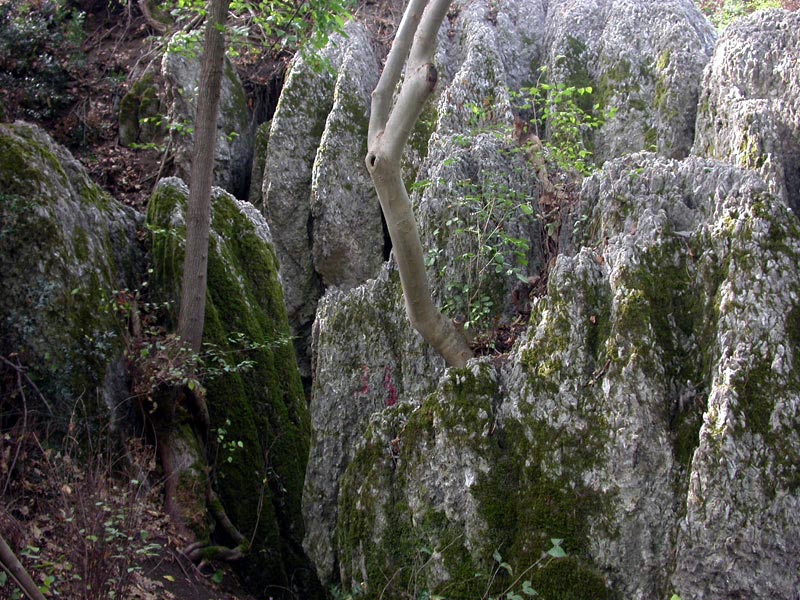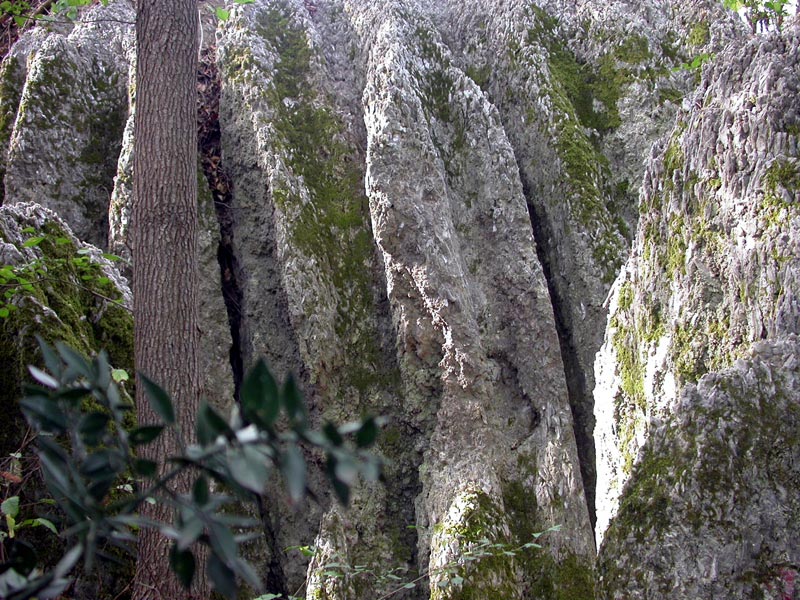Parco dei Gessi Bolognesi e Calanchi dell'Abbadessa
enteparchi.bo.itFacilities
Via del Pilastrino Rest Area
The rest area is situated next to
the historical Via del Pilastrino, in one of the most panoramic and
historically significant points of the eastern section of the Park.
Towards the North, next to the small valley of rio Ciagnano, the
beautiful ridge of gullies of Badessa Pass goes on and culminates
in the gentle summit of Mt. Arligo. On the eastern side, you can see
the hill of Settefonti, on the top of which the bell tower of Santa Maria Church stand out.
Towards the South, you can enjoy a beautiful
view on a large stretch of the Apennines of Bologna, with the Idice
valley and the unmistakable silhouette of Mt. delle Formiche, on which Santa Maria di Zena Church is situated; when the sky is clear, in
the background the horizon is closed by the long ridge with the summits of Corno alle Scale and Mt. Cimone.
Former Wire Quarry and Palestrina Rest Area
The town planning history of Bologna shows how close the
relationship between the gypsum and the city has been during the
centuries. As a matter of fact, the presence of the gypsum outcrops has
favored the frequent use of this rock as building material: the first
walls surrounding Bologna were built with blocks of gypsum. However,
only at the end of the 19th century and after World War II the
exploitation became intensive thanks to the opening of a number of
"industrial" quarries; the mining activity damaged the hills and
endangered the whole karst system.
Thanks to activities of denunciation, in 1973 the first quarry and subsequently the others were closed.
- The Cava a Filo (Wire Quarry)
It was the only one to work without explosive, and the last one to be closed.
The quarry has ruined a karst swallow hole of extraordinary paleontological interest, where animal fossils and skeletons have been found. The continuation of this karst depression has been completely masked by the gypsum carried here during the restoration of the quarry. Further on, at the bottom of the wall, there is a narrow fissure leading to a small natural cavity which cannot be entered.
- The Palestrina
It consists of an ancient quarry forehead probably dating back to Roman times; its name derives from the fact that it is used as a climbing wall for training.
From the top of the wall you can enjoy the view of Bologna and of the plain, and a wonderful view over the gypsum outcrops of the plateau of Miserazzano.
Palestrina wall is made of selenite with very big crystals reaching some dozens of centimeters. This kind of structure characterizes the first strata of Gessi Bolognesi series. This kind of crystals increased in size in the marine water when, because of a slow evaporation together with the degree of precipitation, it favored the increase of the crystals size rather than the formation of new nuclei.
Settefonti Bell Tower Rest Area
The area of Settefonti, with the ruins of the 17th century Santa Maria Assunta Church, is one of the most ancient and charming places
of the Park. The hill, characterized by a Pliocene sandstone outcrop,
marks a stretch of the line separating the valleys of the streams
Quaderna and Idice. The surrounding landscape is characterized by sown
areas and gentle meadows contrasting with the wild and bare clayey
slopes spotted with shrubs and bordered by woodlands, where the rock
outcrops and forms characteristic gullies.
The place name refers to seven
legendary fountains springing in the nearby area, which have been
destroyed by erosion or landslides.
The restoration ended in 2001: it aimed to gave the ancient look to the
façade of the church and to the bell tower through the integration of
the restored parts with the original ones.
Guided Visits
The Park has organized a service of naturalistic, speleological, and historical-architectural guided visits addressed both to schools and groups of visitors. This activity is carried out by cooperatives and a number of associations, and it involves many groups of students and hundreds of young people and adults every year. The length of the tours goes from a few hours to the whole day, and it is possible to carry out both itineraries in the open air and a visit to the cave of the Spipola.
Organized groups can also ask for different dates. For information and bookings, please contact the Park Offices.
Besides the guided tours organized by the Park, further initiatives are suggested by: Coop. Dulcamara - Via Tolara di Sopra, 78 - 40064 Ozzano Emilia (BO) - Tel. +39 051 796643



